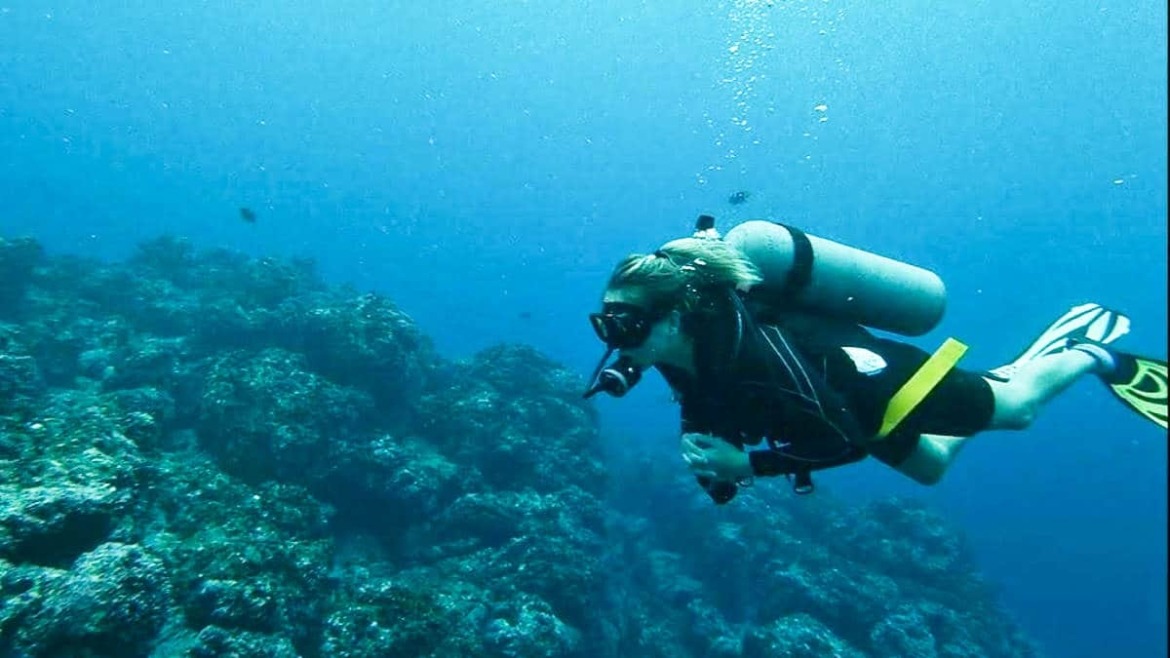Are you looking for your next underwater adventure? Searching for the best scuba diving in Costa Rica can be overwhelming, especially with so many dive spots to choose from. Our blog is here to help!
At Bill Beard’s Costa Rica, we’re seasoned divers and travel experts who have researched and explored the depths to give you the information you need to plan your perfect dive trip.
Read on to find out more about why Costa Rica should be at the top of your dive list!
Discover Why US Travelers Love Costa Rica for Scuba Diving!
It’s no secret that Costa Rica is a favorite among US travelers, and here are the top 7 reasons why:
1. Excellent scuba diving conditions
Diving conditions are the first reason why scuba divers keep choosing Costa Rica as their top choice.
Temperature
On the Pacific coast, temperatures typically range from 75°F to 85°F (24°C to 29°C), while the Caribbean coast tends to be slightly warmer, averaging between 79°F to 86°F (26°C to 30°C).
During the dry season (December to April), water temperatures can drop slightly, especially in areas with upwellings, so a wetsuit of 5 mm might be necessary.
Visibility
With lots of nutrients that attract pelagics, visibility can fluctuate between 20 and 100 feet. The best visibility is usually found during the dry season (December to April), especially on the Pacific coast.
However, even during the rainy season (May to November), many dive sites still offer good visibility, though they can be affected by run-off from heavy rains.
Currents
Currents in Costa Rica can vary significantly depending on the dive site. Sites like the Bat Islands and Cocos Island are known for their strong currents, which attract large pelagic species. On the other hand, areas like the Gulf of Papagayo and the Caribbean coast have milder currents.
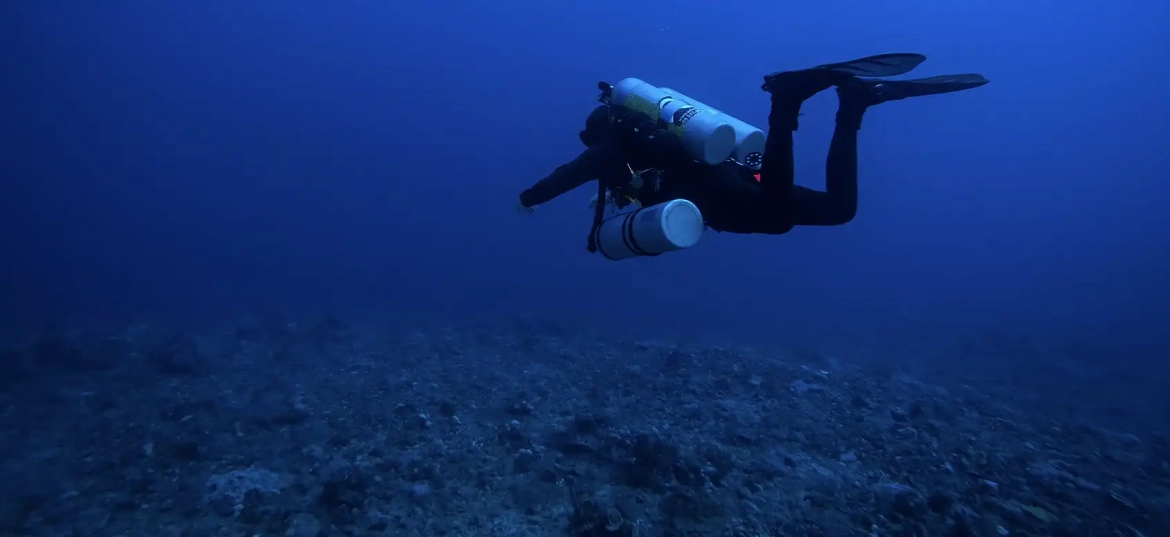
2. There are many diving sites to choose from
There are countless dive sites in Costa Rica, and choosing the right one for you depends on your skill level and interests.
If you’re a beginner, consider diving in the Gulf of Papagayo’s protected bay. Dive sites like Punta Gorda, Tortuga, and Escorpiones in Guanacaste offer calm waters, easy entry points, and shallow depths. Here, you can see colorful marine life, including tropical fish and coral formations, while building your diving confidence.
For experienced divers, the Cocos Islands are a must if you have the time. The shortest liveaboard trip to this site is 10 days, and it’s wise to plan an extra day before your voyage to handle any potential travel delays. We also recommend The Bat Islands for advanced divers due to strong currents and depths exceeding 100 feet (30 meters).
Moreover, divers of all experience levels can enjoy the Catalina Islands. Here, you can see giant Pacific mantas, spotted eagle rays, devil rays, turtles, and tropical fish. Keep in mind that during the dry season (December to April), there may be surface chop, cooler water temperatures, and surges.
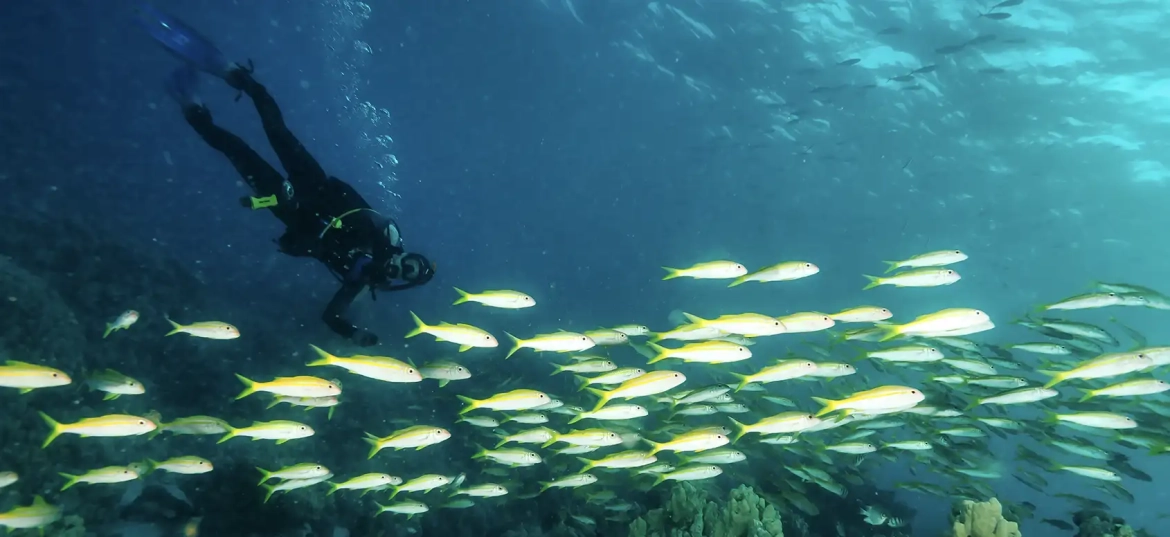
3. Diverse marine wildlife to see & photograph
Thanks to the nutrient-rich coastal waters, both the Pacific and Caribbean sides of Costa Rica offer a magical diving experience. The clear sea provides visibility, ensuring divers can spot various marine creatures.
The underwater scenery is so captivating that divers might find themselves distracted by sightings of white-tip reef sharks, manta rays, dolphins, sea turtles, and huge schools of tropical fish.
The Catalinas Islands serve as a cleaning station for Giant Pacific Mantas, so they are a great place for divers wanting to see one of these majestic creatures. Moreover, polar currents bring other mantas and mind-blowing herds of cow-nose and mobula rays that can fill the ocean from surface to floor as these enormous groups pass through.
The Big Scare site at The Bat Island is a great place if you want to see bull sharks. And Cocos Island is the perfect spot to see schooling hammerhead sharks. This island is also a gathering place for large pelagic species, including stacks of marble rays, whale sharks, manta rays, and much more.
As a tip, December to April are the best months for capturing stunning photographs in Costa Rica. During this period, the skies are clear, and there is no rain.
January through March, in particular, offers perfect lighting conditions and abundant marine life sightings. Just be sure to check the weather and conditions before heading out!
From May to August, you can enjoy calm seas and breathtaking sunsets reflecting off the clouds. A boat ride in the rainy season comes with its own perks, such as spotting dolphins, mating turtles on the surface, and possibly encountering other marine life!
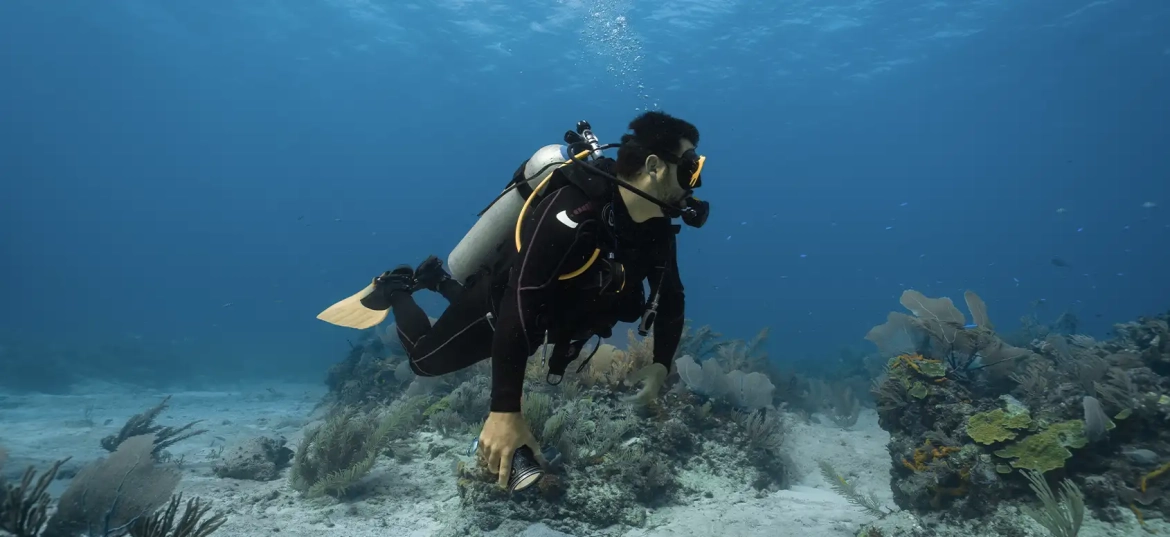
4. Excellent dive centers
Costa Rica has numerous well-equipped dive centers with certified bilingual instructors offering diving courses for all levels. So, if you’re looking to get your Open Water certification or an advanced course like the Divemaster, this place is perfect for you.
The dive centers are well-equipped with modern and well-maintained gear. They offer everything you need for a safe and comfortable dive, including wetsuits, masks, fins, and tanks. Lastly, you’ll find dive centers conveniently located near popular dive sites across the country. All you need to do is locate the best dive shop near you!
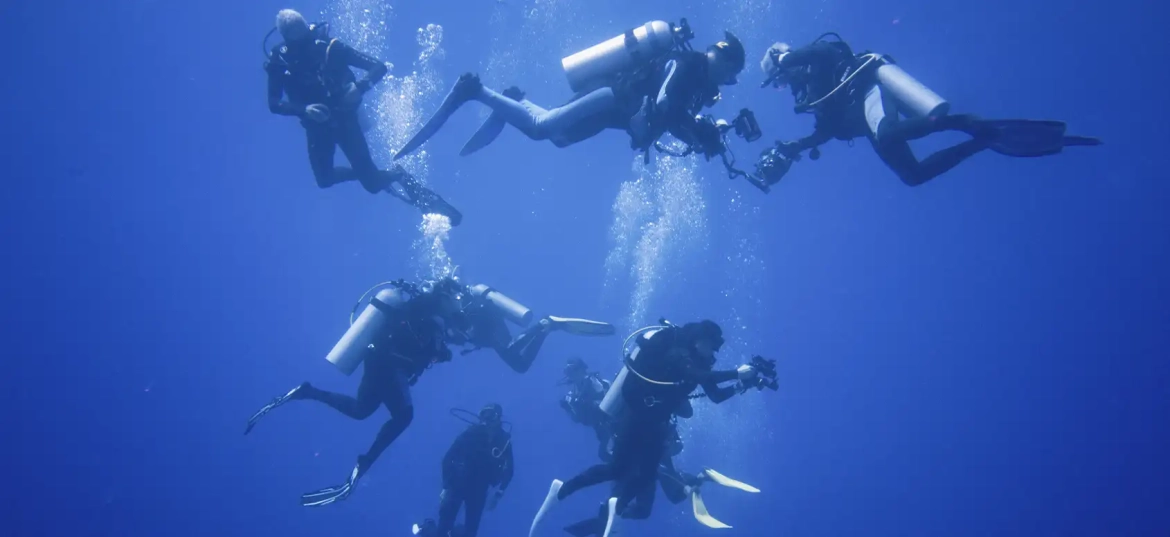
5. Lots of diving packages
Costa Rica offers a wide range of diving packages for all levels of divers. Here are some of our top picks:
- One-Day Dive in the Papagayo area: Explore the diverse marine life of Virador/Turning Point, Monkey Head, Tortuga/Key Largo, Argentina Point, Sorpresa, Tiburones/Shark Shallows, Punta Gorda, and Tranquilo.
- One-Day Dive Trips in Flamingo, Conchal, and the Catalinas: Witness the seasonal migrations of schooling Pacific Mantas from November to April and see humpback whales from late January to February and again from late July to August.
- One-Day Dive Trips in Tamarindo: Enjoy 2-tank dive trips, often at the Catalina Islands, known for encounters with giant Pacific Mantas and humpback whales during their seasonal migrations.
- One-Day Dive Trip to the Bat Islands: Experience a three-tank dive at the Bat Islands, renowned for encounters with bull sharks at “Big Scare” and sightings of manta rays, whale sharks, and humpback whales during the crossing.
- One-Day Dive Trip to Catalina Island: Discover abundant marine life at the Catalina Islands with seasonal sightings of giant Pacific Mantas and humpback whales.
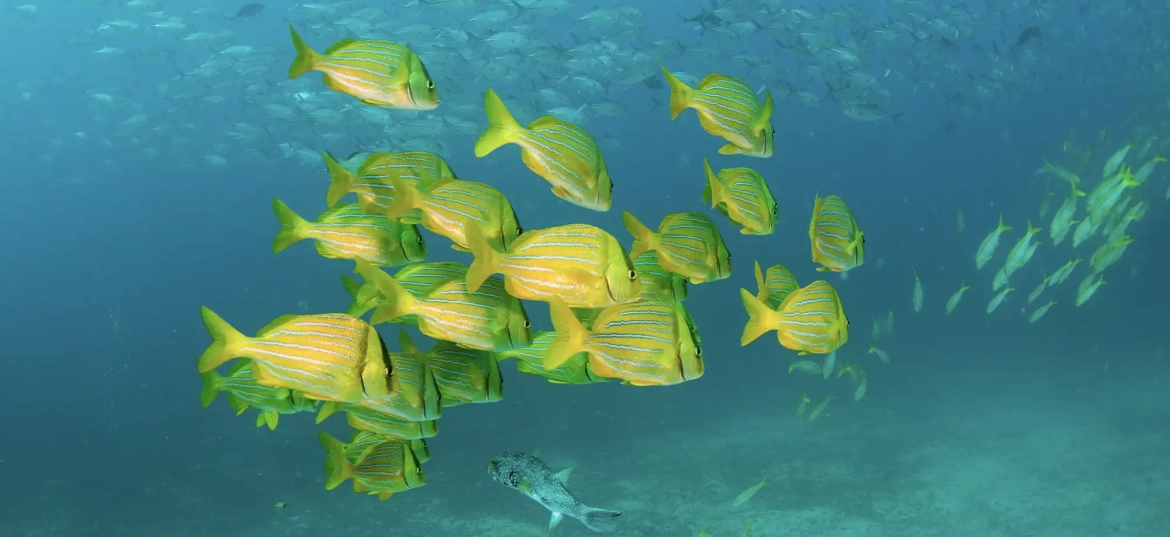
6. Easy accessibility from major tourist destinations
Costa Rica offers convenient access via two international airports: Juan Santamaria International Airport (SJO) and Daniel Oduber Quiros International Airport (LIR).
When planning your dive trip, consider your destination. If heading to the Cocos Islands, Cano Island, or Tortuga, fly into SJO. For dives in the Gulf of Papagayo, Catalina Islands, or Bat Islands along Guanacaste’s Pacific Northwest Coast, LIR is your best choice.
Moreover, the country has many beach towns that serve as tourist hub spots, such as Playas del Coco, Playa Hermosa, the Gulf of Papagayo, the Papagayo Peninsula, and Playa Ocotal. These beaches offer an ideal base for exploring Costa Rica diving!
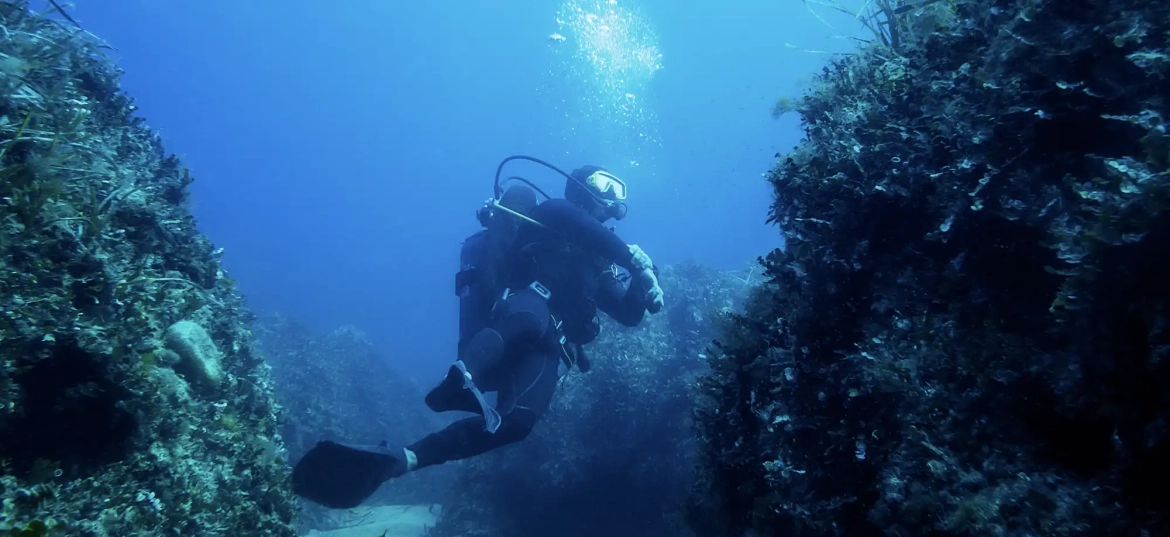
7. Sustainable tourism practices
Costa Rica has 5% of the world’s biodiversity, which means half a million species call it home. Another fact is that over 25% of its land is protected as national parks and reserves, preserving its natural beauty for future generations.
Underwater, Costa Rica’s commitment to conservation is evident through sustainable tourism initiatives and a network of protected National Marine Parks. These include Ballena, Cahuita, Cocos Island, Las Baulas, and Santa Rosa, home to the Bat Islands.
Marine Conservation Programs here actively monitor fish populations and promote marine environmental awareness and conservation efforts among tourists and residents. This dedication ensures a thriving underwater ecosystem for scuba divers to explore and enjoy. In short, Costa Rica is a great place for eco-friendly diving.
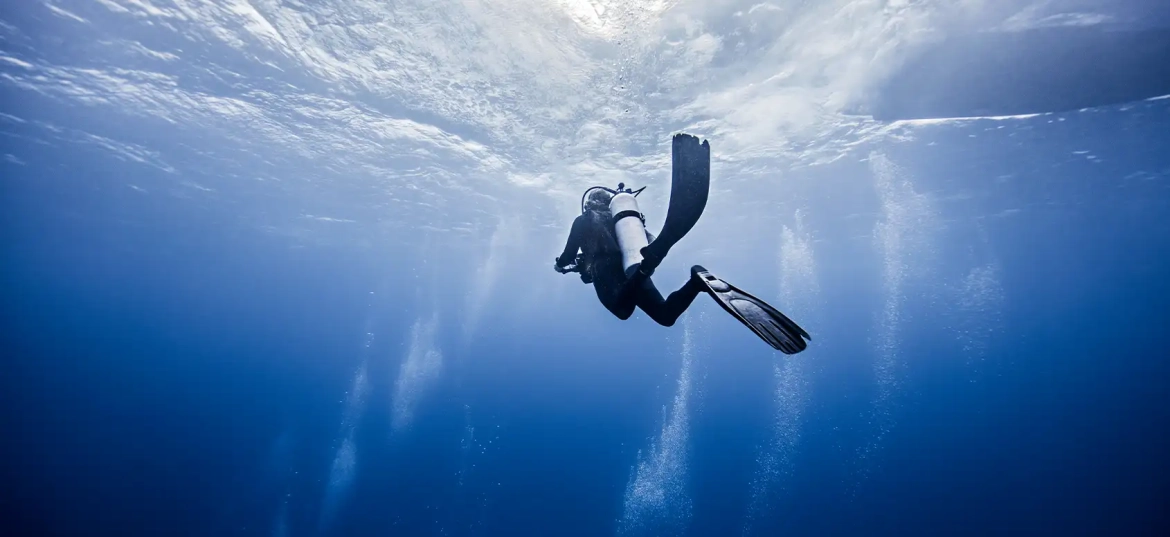
Make Your Scuba Diving Trip a Reality with Bill Beard’s Costa Rica!
At Bill Beard’s Costa Rica, we can help you find the best scuba diving in Costa Rica. With our expertise and personalized dive packages, we ensure a safe and exciting scuba dive experience tailored to your preferences and skill level.
Contact our team at Bill Beard’s Costa Rica now to book your scuba diving tour. Explore Costa Rica’s underwater wonders!
Stay connected:
- Direct: 954-453-5044
- Fax: 321-400-1404
- Toll-free: 877-853-0538
- Local number (Costa Rica): 2479-7089 (Available from 9-5 PM)
- Office hours: 8-6 CST M-F & Sat 9-5 CST
- Email: agent@billbeardcostarica.com
FAQs
What is the best season to dive in Costa Rica?
The best season to dive in Costa Rica depends on your preferences! Diving is possible year-round here as the country has a tropical climate with distinct dry and rainy seasons.
The dry season, from December to April, is characterized by sunny days and calm seas, making it the most popular time for diving. However, it can also bring cooler water temperatures and occasional surface chop.
The rainy season, from May to November, offers lush landscapes and fewer tourists. While rain can affect visibility and sea conditions, it also brings unique marine life encounters, such as whale shark sightings and turtle mating.
Which side of Costa Rica is best for diving?
Costa Rica’s Pacific coast is the best place for diving. It offers diverse sea life and popular dive sites. Destinations like the Catalina Islands, Bat Island, and Cocos Island are famous for encounters with large pelagic species like sharks, rays, and whales.
Moreover, the Caribbean coast is home to amazing dive sites like Cahuita National Park and Manzanillo that allow you to spot reef sharks, turtles, and seahorses. These sites are also great for divers looking for calm dives!

